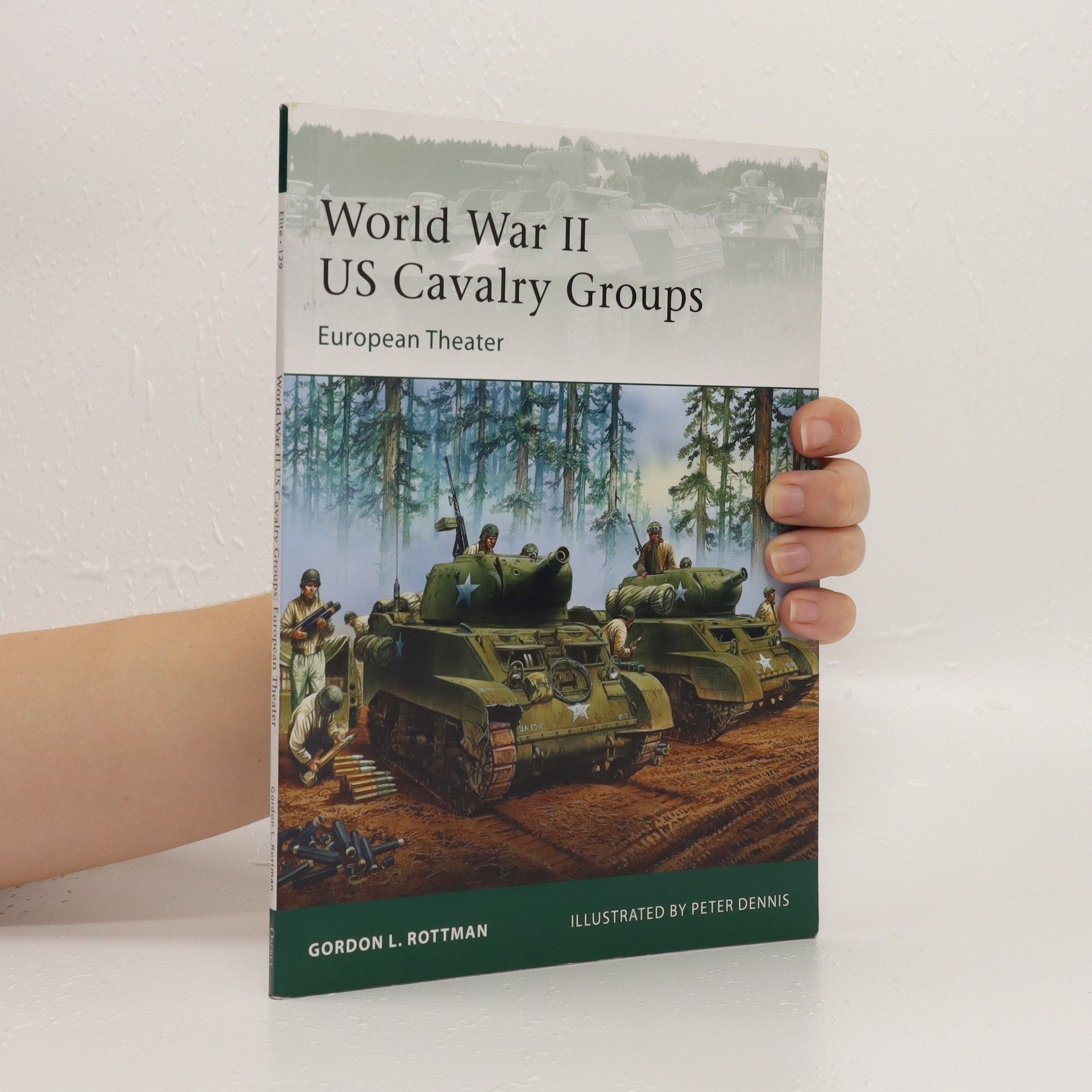Gordon L. Rottman Libri
La scrittura di Gordon L Rottman è profondamente informata dalla sua vasta carriera ventiseienne nell'esercito americano, inclusi ruoli nelle Forze Speciali e nell'intelligence. Questa profonda esperienza gli consente di esplorare e trasmettere meticolosamente le sfumature della storia militare e delle tattiche operative. Il lavoro di Rottman offre prospettive autentiche e perspicaci sul mondo del conflitto armato e delle operazioni strategiche. I lettori apprezzano la sua prosa per la profondità e la sua autorevole comprensione della sfera militare.







Korean War Order of Battle
United States, United Nations, and Communist Ground, Naval, and Air Forces, 1950-1953
- 262pagine
- 10 ore di lettura
The book delves into the Korean War through detailed historical files from various armed services and nations. It covers unit backgrounds, organizational structures, personnel details, service periods, insignia, weaponry, casualties, and major commands, offering a comprehensive view of the Western, North Korean, Communist Chinese, and Soviet forces involved in the conflict.
US Special Warfare Units in the Pacific Theater, 1941-45
- 96pagine
- 4 ore di lettura
The bitter fighting in the Pacific Theater required new forms of warfare, and the gathering of detailed intelligence information on the remote and varied islands and their determined defenders. As a result, new scout, raider and reconnaissance units were formed‹the pioneers of today's special forces. Some units were small, while others comprised thousands of men. All contributed significantly to the war effort. This book examines a wide range of PTO special-warfare units, including the Alaskan and Alamo scouts, 5217th/1st Recon Battalion, Marine Amphibious Recon and Raider units, Amphibious Scouts, and 6th Ranger Battalion.
Focusing on the Pacific islands involved in World War II, this comprehensive resource offers in-depth information on various geo-military aspects of the Pacific Theater. It organizes entries regionally and chronologically, detailing island names, nicknames, and wartime time zones, while also exploring physical characteristics, weather, health hazards, historical context, and military significance. The book covers strategies and operations of both Japanese and Allied forces, challenges posed by terrain, key military figures, and the islands' postwar conditions.
Hero
- 144pagine
- 6 ore di lettura
Heroes are hard to find, especially for Sean, who, at fifteen years old, has never had it easy. He's estranged from his father and abused by his mother—Sean feels he has nowhere to turn. Suspended from school and with a mounting police record, he is one step away from serious trouble. Sentenced to community service for violating curfew, Sean is sent to Mr. Hassler's farm, where he's forced to confront his fears and take charge of his own life. When Sean is faced with a dangerous situation that tests his true character, he learns just what it means to be a hero. In an age where it seems that few truly worthy heroes exist, S. L. Rottman has written a compelling and realistic portrayal of the conflicts that drive a young man toward his destiny.
First adopted in 1917, the rugged and reliable Browning .30-caliber machine gun remained in US service into the Vietnam era, and is still occasionally found in use elsewhere even today. This title reveals the origins, combat history and legacy of this versatile and dependable weapon.
World War II US Army Combat Equipments
- 64pagine
- 3 ore di lettura
During World War II American soldiers, or 'GIs' as they were more commonly known, headed into Europe laden with the provisions needed to survive and function in hostile territory. This book offers a comprehensive treatment of US World War II gear, covering not only basic belts, pouches, packs, mess gear, first aid gear, tools, and more.
A compilation of the slang unique to the Vietnam War, how it was used by the soldiers and Marines and its relation to the war.
The cavalry regiments of the US Army were in the process of being transformed into a mechanized force when the USA entered World War II. While those cavalry regiments deployed to the Pacific to fight the Japanese were turned into infantry units, those sent to Europe were employed as light armor in the cavalry's traditional spearhead roles - reconnaissance, the screening of advances and flanks, and the pursuit of beaten enemy forces. Equipped with M8 Greyhound armored cars, M5 Stuart and M24 Chaffee light tanks, and halftracks, these units were designated cavalry groups (mechanized), each c. 1,700 strong and divided into two heavily armed squadrons. They were seldom attached to divisions, but to higher-level corps commands, meaning they could be shifted around quickly and independently and be formed at need into flexible battle groups with armored, infantry, and other units, depending on the mission. Thirteen CG(M)s fought in Europe, seeing a great deal of action - they were usually the first units in contact with the enemy, and, because of their mobility and freelance role, the ones sent as "fire brigades" to block dangerous gaps. Featuring specially drawn full-color illustrations depicting uniforms, insignia, armored vehicles, and tactical scenarios, this is the story of the US cavalry units that led the advance to victory in Europe during World War II.
US MACV-SOG Reconnaissance Team in Vietnam
- 64pagine
- 3 ore di lettura
"US Macv-Sog Reconnaissance Team in Vietnam". číst celé
